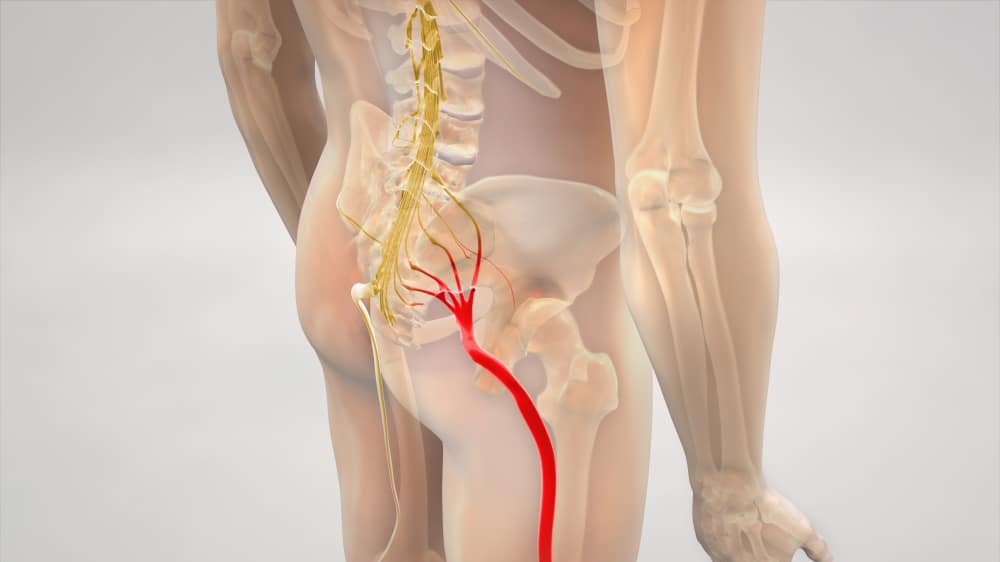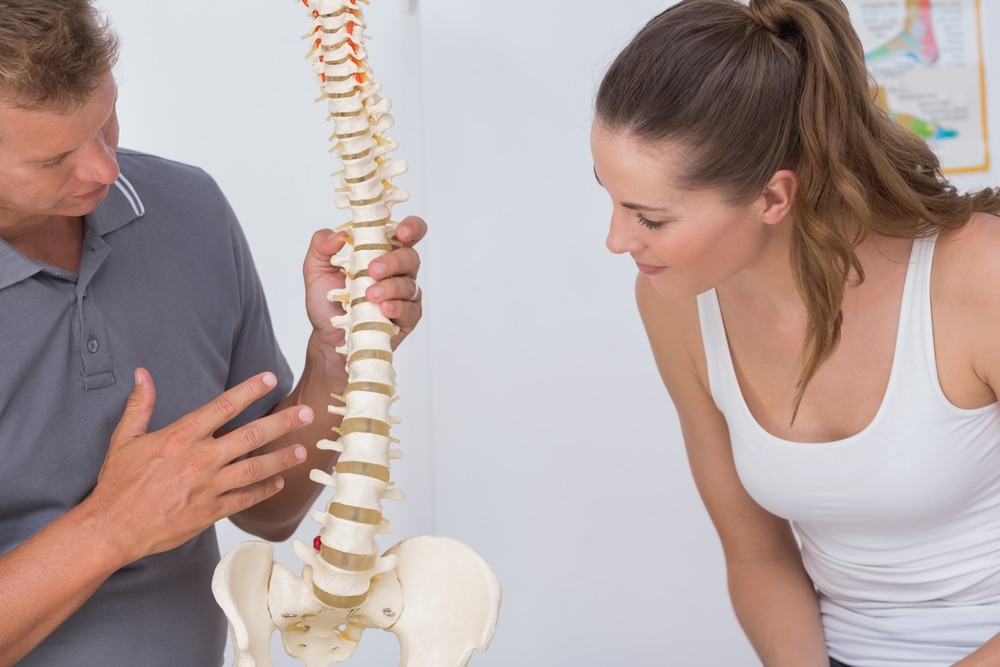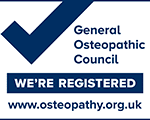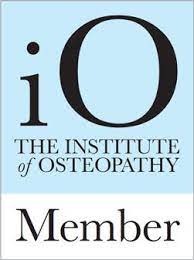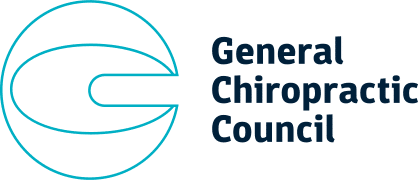What is sciatica?
Sciatica is a very common complaint and can affect people of all ages, but the good news is that it can be effectively treated with manual therapy techniques provided by chiropractors and osteopaths.
Sciatica is often misdiagnosed and after a physical examination, the diagnosis is usually one of non-specific low back pain which is producing pain not only in the lower back but also the buttock and leg, mimicking sciatica symptoms.
This is where having a back pain specialist such as an osteopath or chiropractor can quickly and accurately make the correct diagnosis and provide the best treatment plan for you from day one. If your symptoms are confirmed as sciatica, then you are in the right place to receive the correct treatment to clear the pain and return you to pain free movement.
Chiropractors and osteopaths have studied to university degree level in human anatomy, medical diagnosis, and treatments. Recognised in the UK as primary healthcare practitioners, we are able to assess and diagnose musculoskeletal conditions whilst also providing a direct referral service, if required, to other medical specialities to ensure that you receive the correct care.
What does sciatica feel like?
- Pain which may be stabbing, burning, or shooting in nature
- Tingling – like pins and needles
- Numbness and weakness in the affected leg on the same side as the buttock pain
- You may also experience a mixture of these symptoms at different times of the day or during different movements
- Often you also experience changes in the intensity of symptoms in the day and with different movements.
The diagnosis of sciatica is given when you have pain in the buttock and back of the thigh and down the leg, and can also include the leg. It typically affects only one side of the body but in some cases can be on both sides.
What is the cause of sciatica?
- A back injury through lifting or repeated lifting and bending forwards
- A change in the intervertebral disc through natural wear and tear called a disc prolapse or protrusion. This has in the past been incorrectly described as a slipped disc which is inaccurate, as the discs do not move which causes much confusion in the general population.
- Spinal stenosis – a change in the vertebra and disc height through wear and tear, often called arthritis, which alters the space available for the spinal nerves that give us sensation and trigger muscles to move.
- Spondylolisthesis – a change in the vertebra in a forward or backward position that again will affect the space available for the spinal nerve to extend beyond the spinal column.
All of these pain descriptions are common and can be effectively managed and relieved with the correct treatment and care, restoring the normal function to the spinal joints and relieving painful movements such as putting your socks on.
In cases of true sciatica, in which there is a change in the disc and vertebra, there is sometimes a fear from other healthcare professionals that chiropractors and osteopaths can be of no help, as vertebral manipulation and other manual therapy techniques are not going to correct the underlying structural change.
However, this is not the case. As with physiotherapists, we have various manual therapy tools that we can use to help patients, and provide the correct and most effective care to initially settle and help resolve symptoms. The structural changes that result in the symptoms of sciatica have in fact taken decades to occur, as the lift/awkward movement or overload of these joints has aggravated and injured them, resulting in the pain and other symptoms.
What causes sciatica to flare-up?
Due to the underlying structural changes as discussed above, this also means that the function of the vertebra and associated disc is altered. Change in mechanical movement means the joints are less able to adapt and tolerate loads, such as repetitive light lifting, through the joint structure, and are more easily injured. Often it is this low load, repetitive physical overloading that will injure the joints and cause sciatica.
This is why often patients describe an activity that many years ago would not have caused them any irritation and pain but now that there is the presence of wear and tear, the activity triggers pain and limits daily movements.
What does sciatica look like on an MRI (Magnetic Resonance Imaging)?
It is not routine to send a patient for an MRI scan who has been diagnosed with sciatica and there is clinical evidence that imaging is not helpful in terms of recovery from an injury.
And, so long as the physical examination and medical history are unremarkable and do not indicate any red flegs, it is also not a requirement to perform an MRI before starting a treatment plan with a musculoskeletal therapist.
If an MRI is taken maybe after symptoms are worsening or treatment is not helping with the sciatica symptoms, then the scan will most likely show changes to the height of the discs and wear and tear to the vertebra. These changes may be seen as bone spurs on the vertebra or a change in the disc height which in turn will reduce the space available for the spinal nerve as it extends beyond the spine, causing a soft irritation of the nerve and causing sensation changes to be felt.
It is through the careful and appropriate application of manual therapy techniques that this soft compression can be relieved from the nerve and hence clear the symptoms for the patient. This is a process that takes several weeks; a treatment plan is required which allows the body to heal.
National Institute of Clinical Excellence (NICE)
NICE is the medical body in the United Kingdom that reviews medical clinical evidence as to the effectiveness of treatments both in relation to pharmaceuticals but also manual therapy treatments that osteopaths, chiropractors and physiotherapists can offer patients.
In relation to the treatment of back pain, with or without sciatica, NICE guidelines state:
“Consider manual therapy (spinal manipulation, mobilisation or soft tissue techniques such as massage) for managing low back pain with or without sciatica, but only as part of a treatment package including exercise, with or without psychological therapy.”
Notably the full guideline states manipulation requires special training:
“Mobilisation and soft tissue techniques are performed by a wide variety of practitioners; whereas spinal manipulation is usually performed by chiropractors or osteopaths, and by doctors or physiotherapists who have undergone additional training in spinal manipulation.”
The report can be found by clicking on this link.
Hopefully having discussed the varied reasoning for the diagnosis of sciatica, and outlining how manual therapies can help not only manage but clear the symptoms you can see, that both chiropractors and osteopaths are well placed in the healthcare setting to help these patients.
To reiterate, sciatica is a common presentation and a diagnosis that can be treated effectively with both manual therapy techniques and return to exercise. We help patients on a weekly basis and take them through understanding the diagnosis, why it has likely occurred, and how treatment over a relatively short period can initially settle and then clear the symptoms.
If you have been diagnosed with sciatica and are struggling with getting back to work and the activities that you enjoy, please give Hutchinson Health a call and book an appointment now.
If you are unsure if chiropractic or osteopathy is the right treatment for you, and you have any further questions that you would like to talk to us about, face to face, then we offer a no obligation Free 30-Minute Consultation in which we can address any questions you may have.


